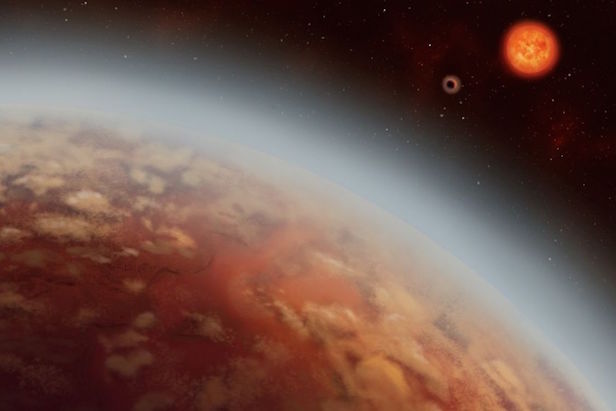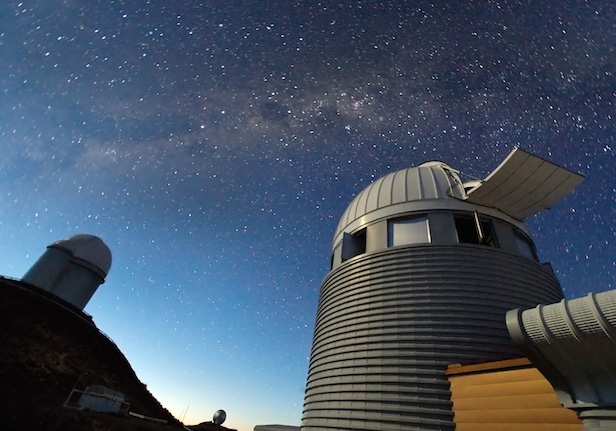Twin super-Earths discovered 111 light years away
While measuring the physical characteristics of K2-18b, a neighbouring planet was discovered in the process

K2-18 is a red dwarf star with two Super-Earths in its orbit. Image credit: A. Boersma
A recent study of a star 111 light years away, called K2-18, has uncovered an intriguing planetary system in its midst. The research conducted has revealed that not only is one of its previously-known orbiting exoplanets a super-Earth, but it now has a partnering exoplanet much closer to the star.
The University of Montreal-led team used the High Accuracy Radial Velocity Planet Searcher (HARPS) instrument attached to the European Southern Observatory’s 3.6-metre telescope at the La Silla Observatory, Chile to make measurements of KB-18b’s mass and density. In a surprising turn of events, astronomers also noticed the presence of another planet within the system, which was described as “lucky and equally exciting” by the University of Montreal doctorate student Ryan Cloutier.
Both of these planets orbit the red dwarf star K2-18 located in the constellation of Leo. The first exoplanet was discovered back in 2015, however the only information they could deduce is that the planet orbited the star within its habitable zone – the region where liquid water could hypothetically exist as a liquid. This is an important aspect astronomers look for when searching for a habitable exoplanet, as liquid surface water means conditions similar to Earth.
To decode more of the exoplanet’s appealing characteristics, the HARPS instrument measured the “wobble” of the star, imparted by K2-18b, to the highest precision possible. From these results, the research team could decide whether the planet was a scaled-up Earth (mostly rock) or a scaled-down Neptune (mostly gas).
“If you can get the mass and radius, you can measure the bulk density of the planet and that can tell you what the bulk of the planet is made of,” says Cloutier.

The La Silla Observatory in Chile is home to the high-precision exoplanet hunting HARPS instrument. Image credit: Iztok Bončina/ESO
This work concluded that the exoplanet is either a mostly rocky planet with a small gaseous atmosphere – similar to a larger Earth – or a mostly water planet with a thick layer of ice on top of it.
“With the current data, we can’t distinguish between those two possibilities,” explains Cloutier. “But with the James Webb Space Telescope (JWST) we can probe the atmosphere and see whether it has an extensive atmosphere or it’s a planet covered in water.”
Whilst looking through the data of K2-18b, Clough noticed a discrepancy within the exoplanet signals. After taking into account the signal caused every 39 days from the rotation of K2-18, and also the signal every 33 days from the orbit of K2-18b, there was a unexplained signal occurring every nine days.
“When we first threw the data on the table we were trying to figure out what it was. You have to ensure the signal isn’t just noise, and you need to do careful analysis to verify it, but seeing that initial signal was a good indication there was another planet,” Cloutier says.
This new star, dubbed K2-18c, is much closer to the star as it has a much shorter orbital period. Because of this, it is most likely too hot to be in the habitable zone, but the analysis has shown it also appears to be a Super-Earth. Cloutier say, “It wasn’t a eureka moment because we still had to go through a checklist of things to do in order to verify the data. Once all the boxes were checked it sunk in that, wow, this actually is a planet.”
Keep up to date with the latest reviews in All About Space – available every month for just £4.99. Alternatively you can subscribe here and make the most of our Christmas offer for a fraction of the price!




